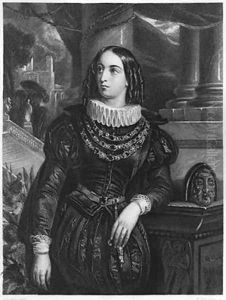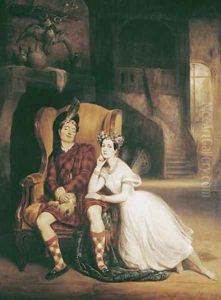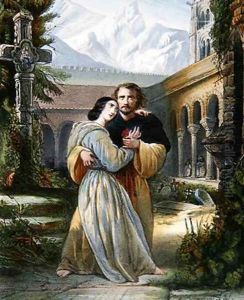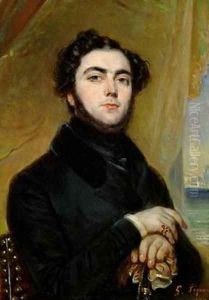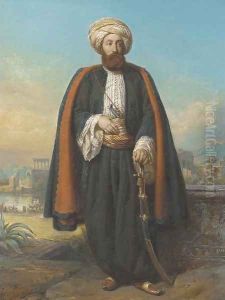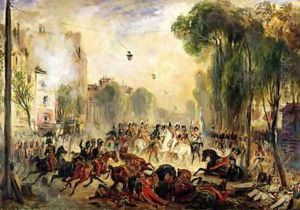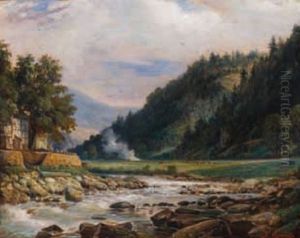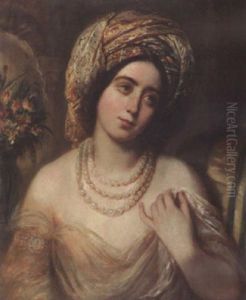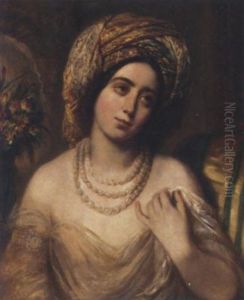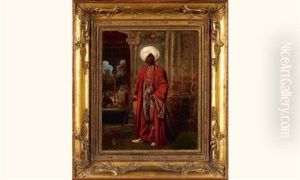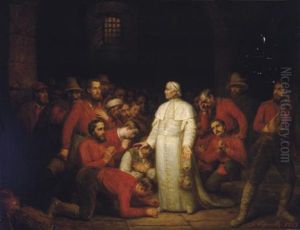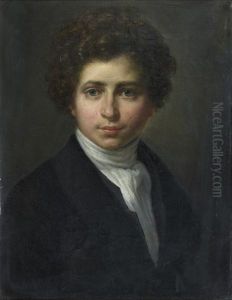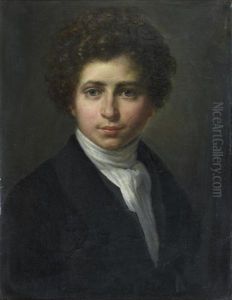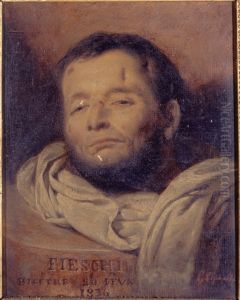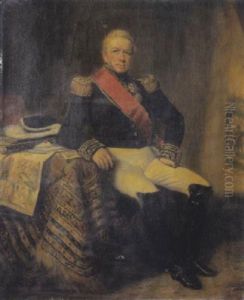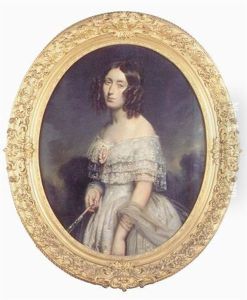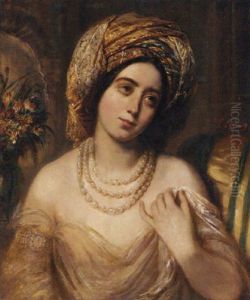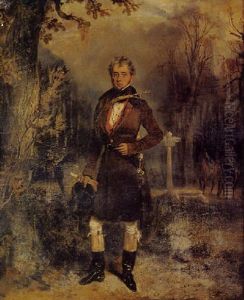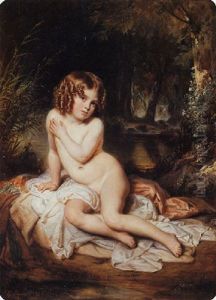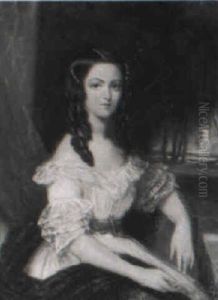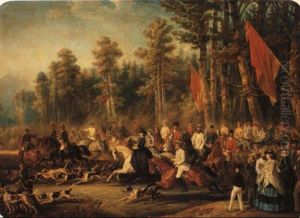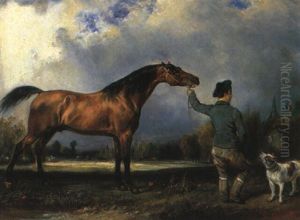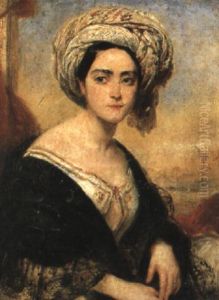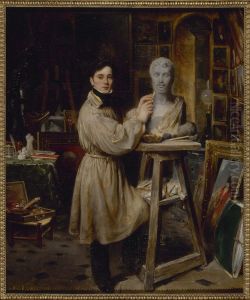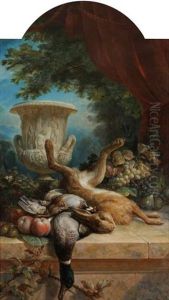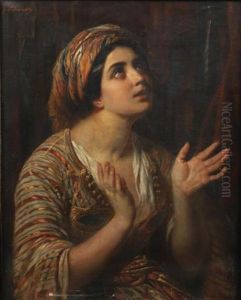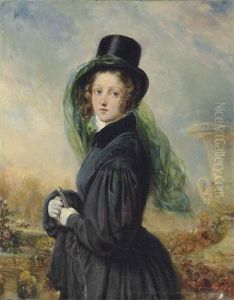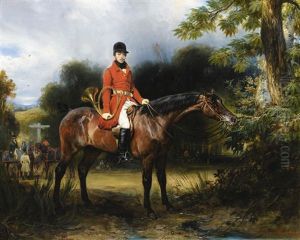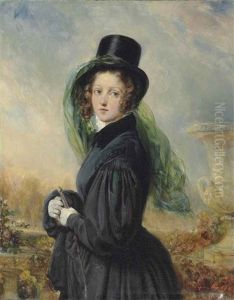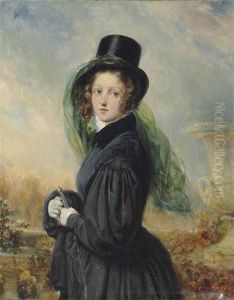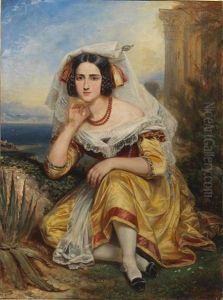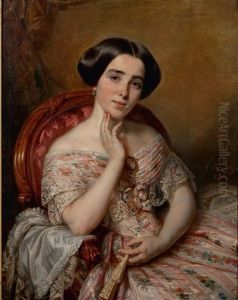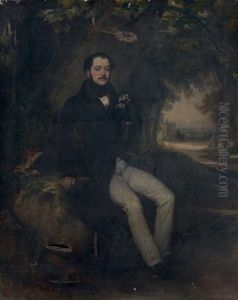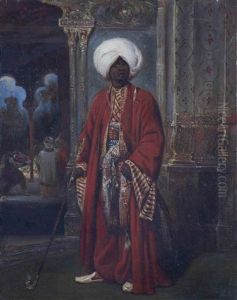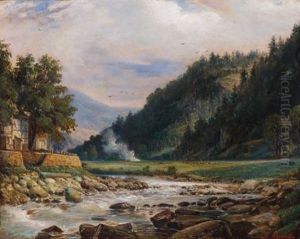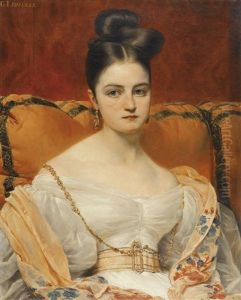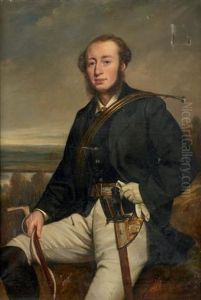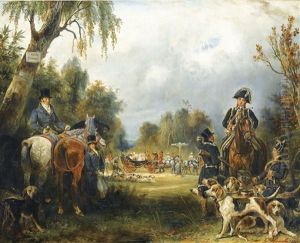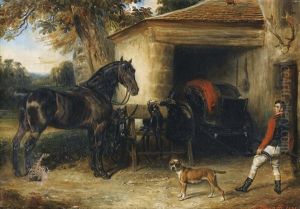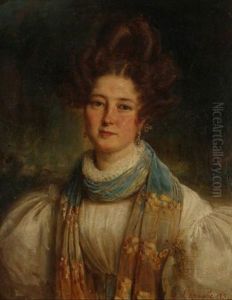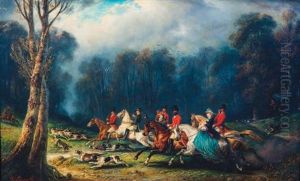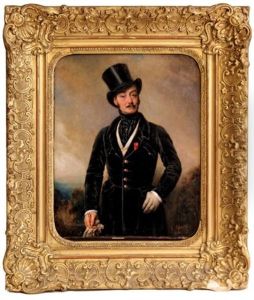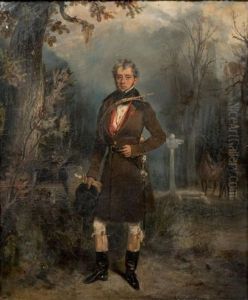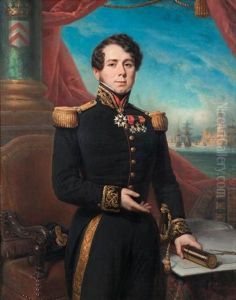Francois Gabriel Guillaume Lepaulle Paintings
François Gabriel Guillaume Lepaulle was a distinguished French painter born in the early 19th century, whose artistic journey reflects the rich tapestry of French art during a period marked by significant transformation and innovation. Born in 1804, Lepaulle lived through a vibrant era in French history, experiencing firsthand the tumultuous shifts from the Napoleonic era through the revolutions of 1830 and 1848, and into the establishment of the French Third Republic. His lifespan coincided with a period of great change in the arts, witnessing the decline of Neoclassicism, the rise of Romanticism, and the early murmurs of Impressionism. Lepaulle's work, therefore, was influenced by a variety of styles and movements, yet he managed to forge his own unique path in the art world.
Lepaulle was primarily known for his detailed historical paintings, portraits, and genre scenes, which were characterized by their meticulous attention to detail, vibrant color palette, and dynamic composition. His ability to capture the essence of his subjects with realism and sensitivity earned him considerable acclaim during his lifetime. He exhibited at the Salon, the official art exhibition of the Académie des Beaux-Arts in Paris, where his works were frequently met with positive reviews from critics and the public alike.
Throughout his career, Lepaulle also engaged with historical themes, often depicting scenes from French history with a romanticized flair that appealed to the nationalist sentiments of the time. His paintings are notable for their historical accuracy, achieved through rigorous research and a deep passion for bringing the past to life. This dedication to historical veracity, combined with his skillful artistry, contributed to his reputation as a painter of note in the historical and portrait genres.
Despite his success, François Gabriel Guillaume Lepaulle is not as widely remembered today as some of his contemporaries. Nonetheless, his contributions to 19th-century French art remain significant. He passed away in 1886, leaving behind a body of work that continues to be studied by art historians and admired by enthusiasts of French art. Lepaulle's legacy is preserved in the collections of French museums and in the annals of 19th-century art history, where his commitment to depicting the human condition and historical subjects with empathy and precision endures.
